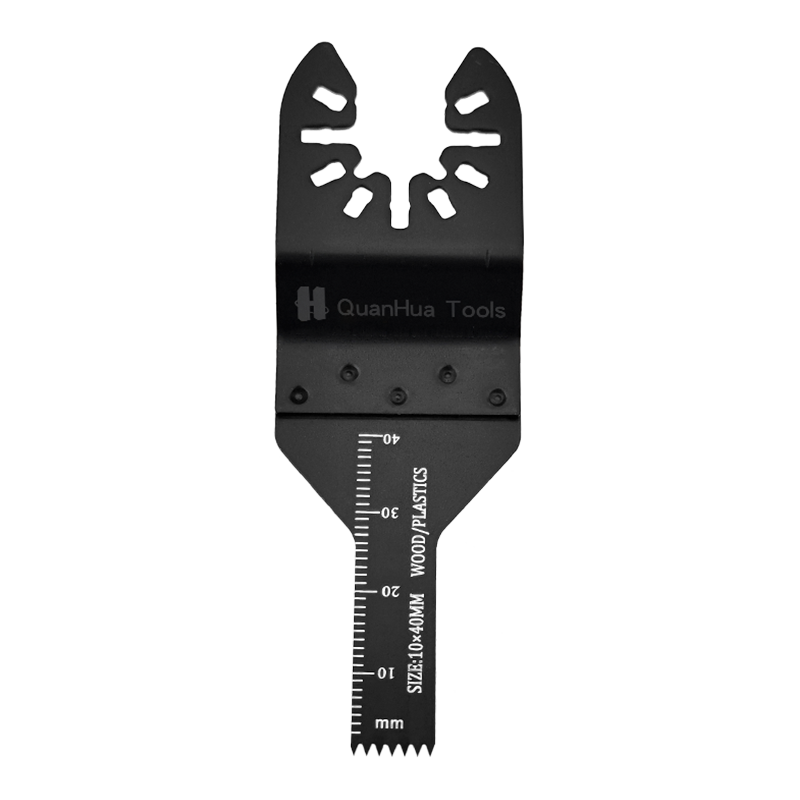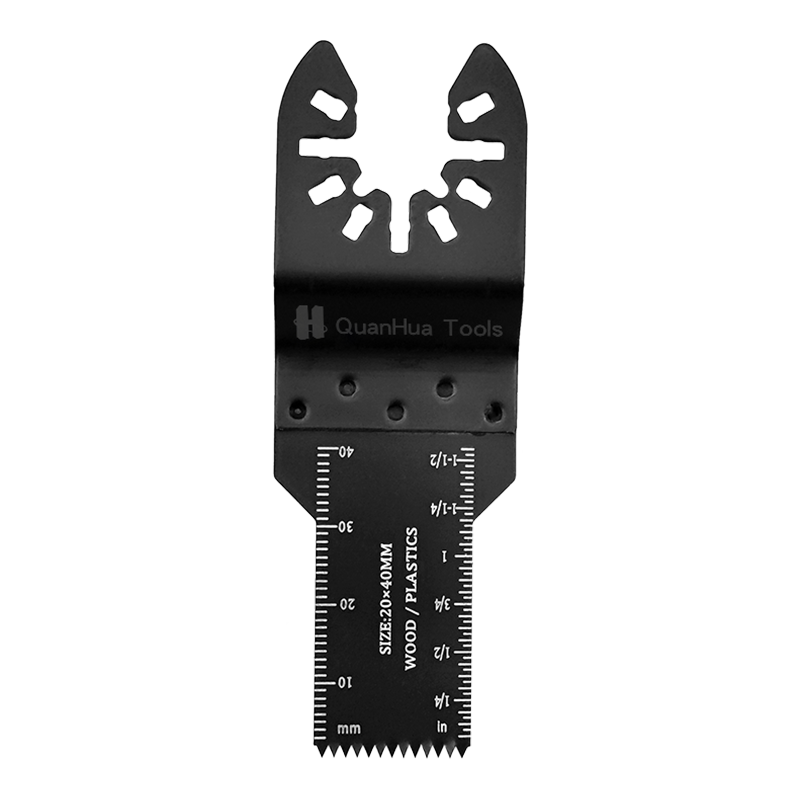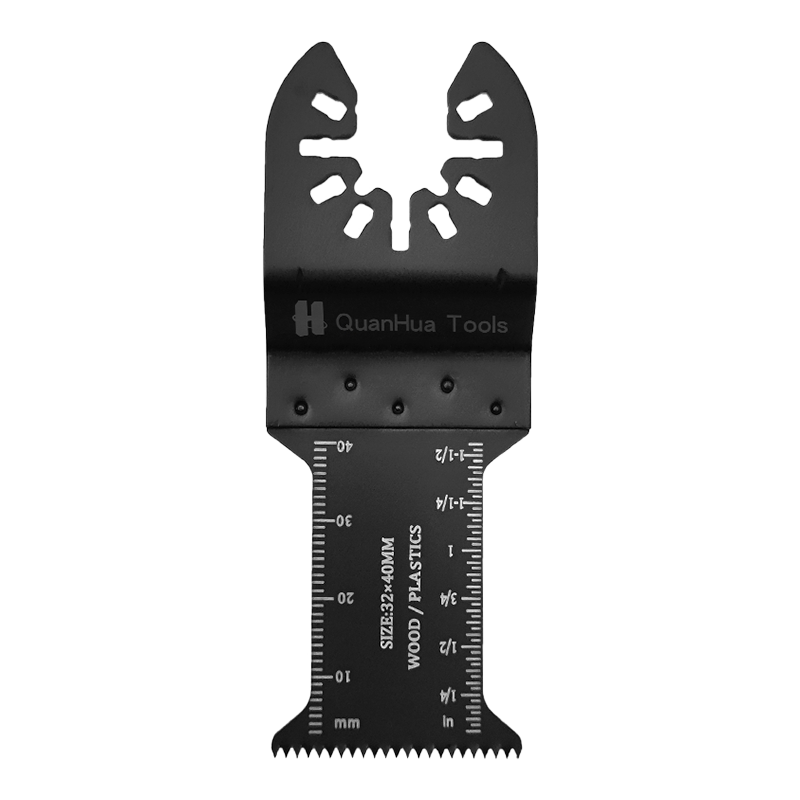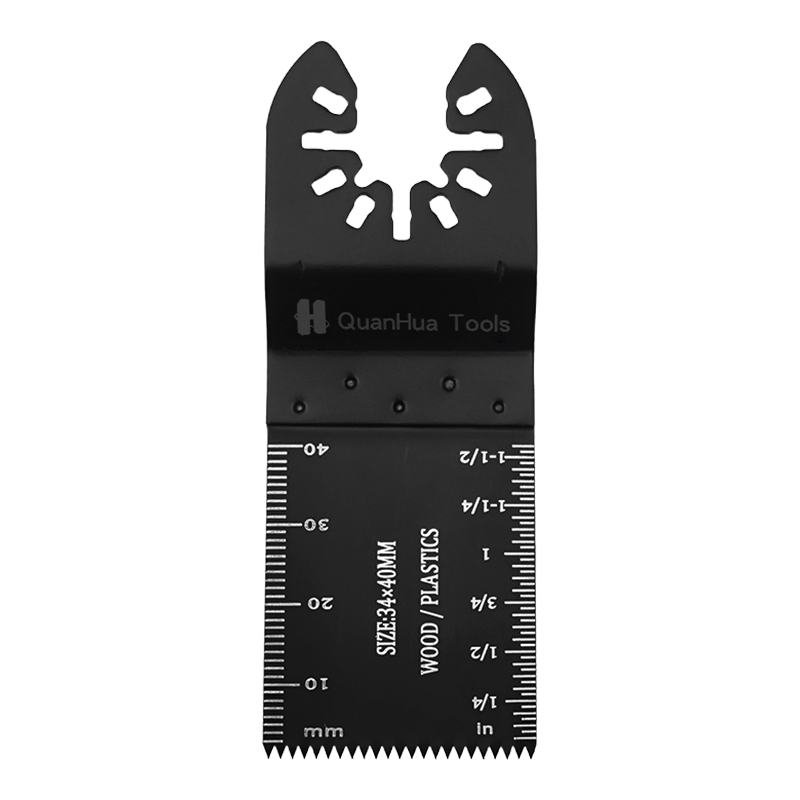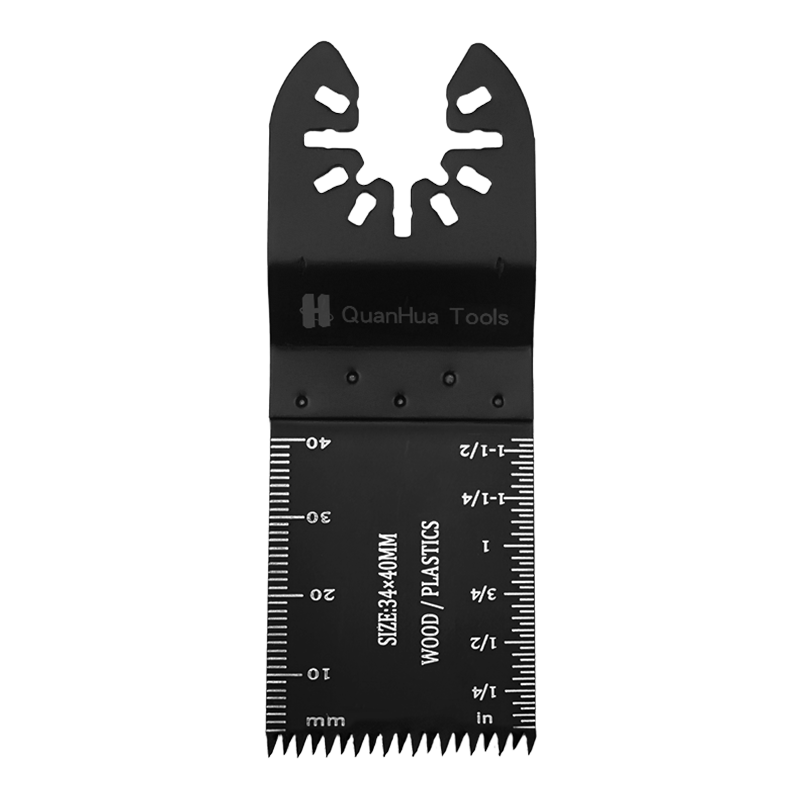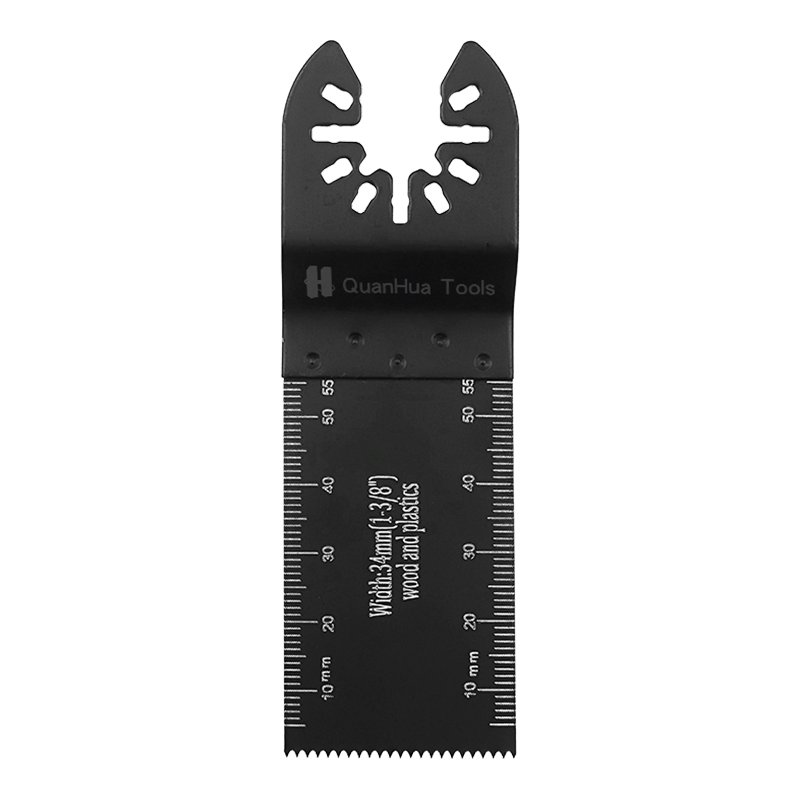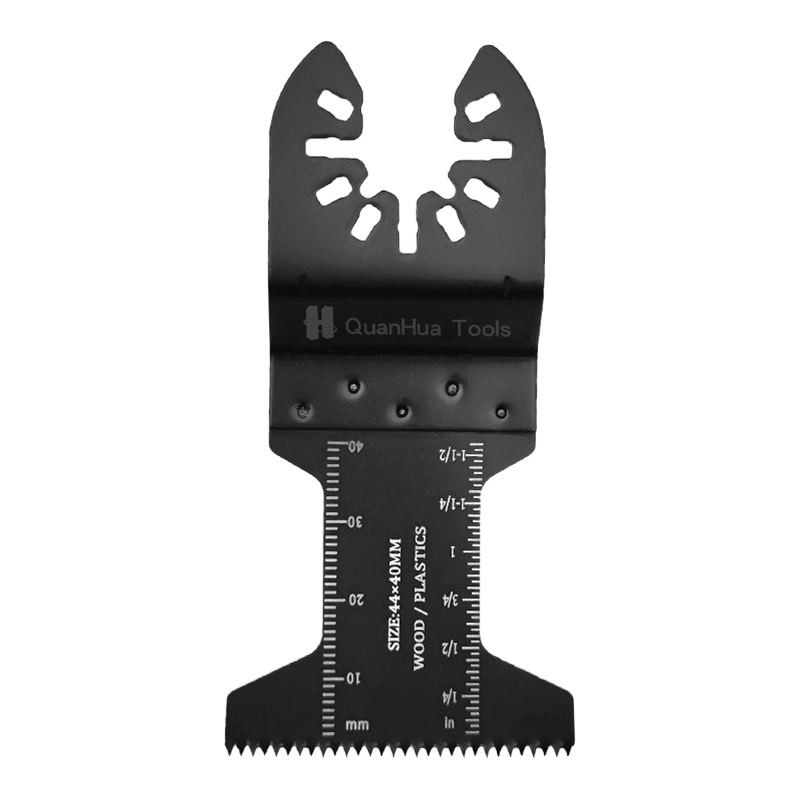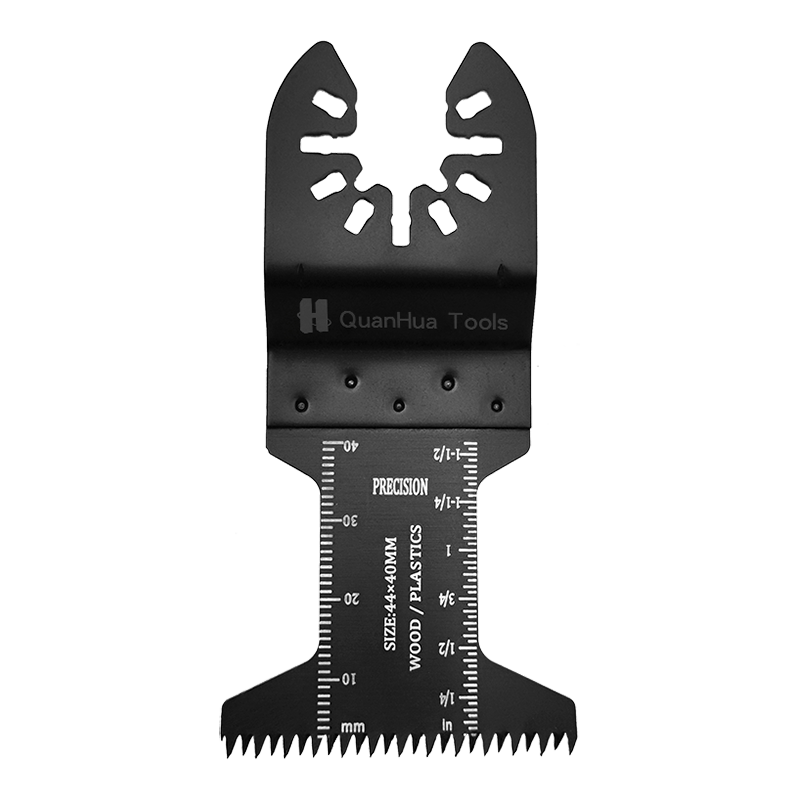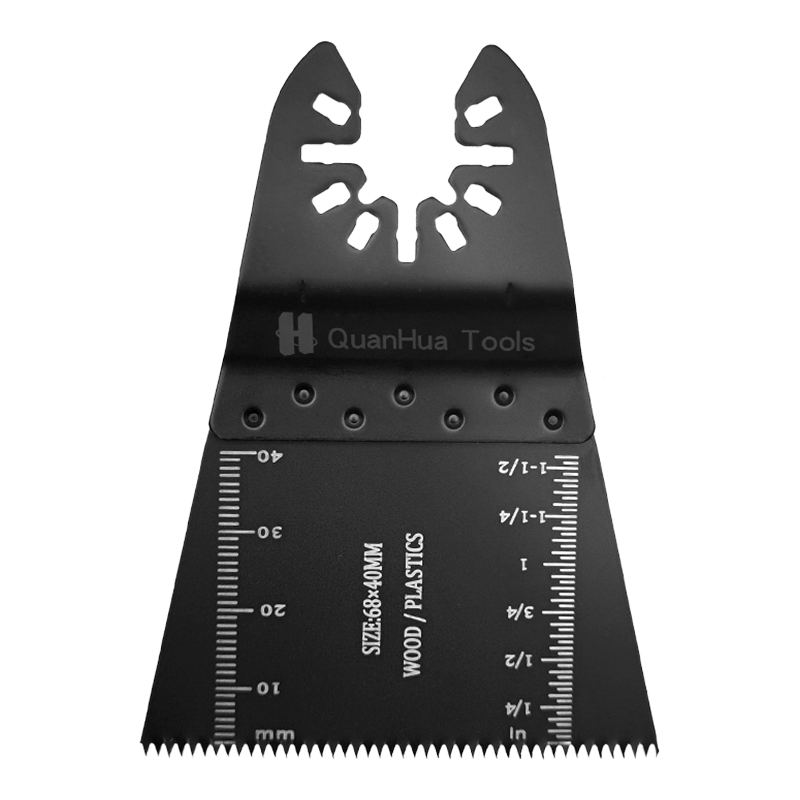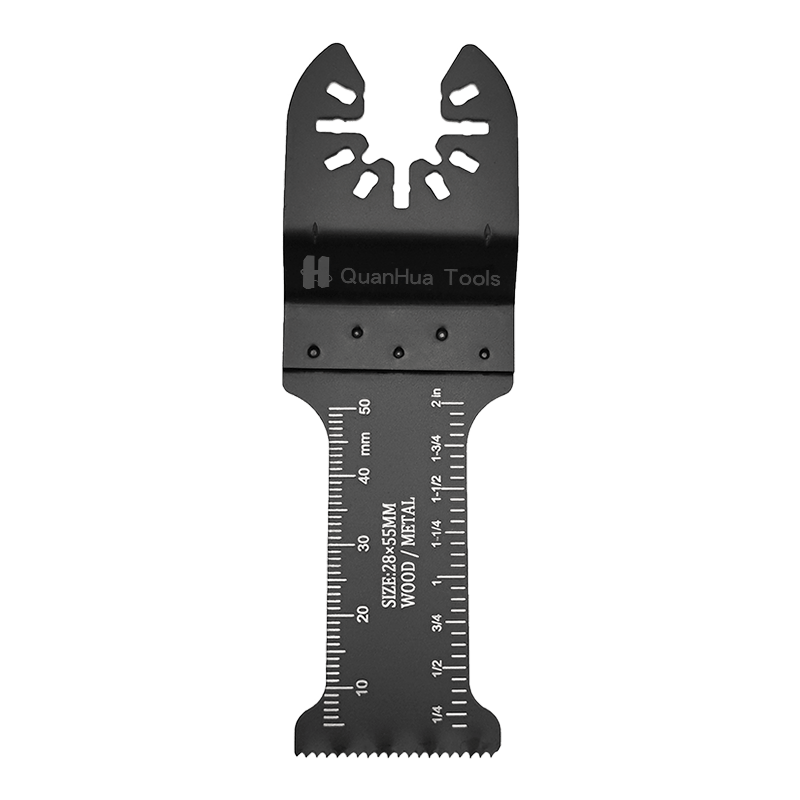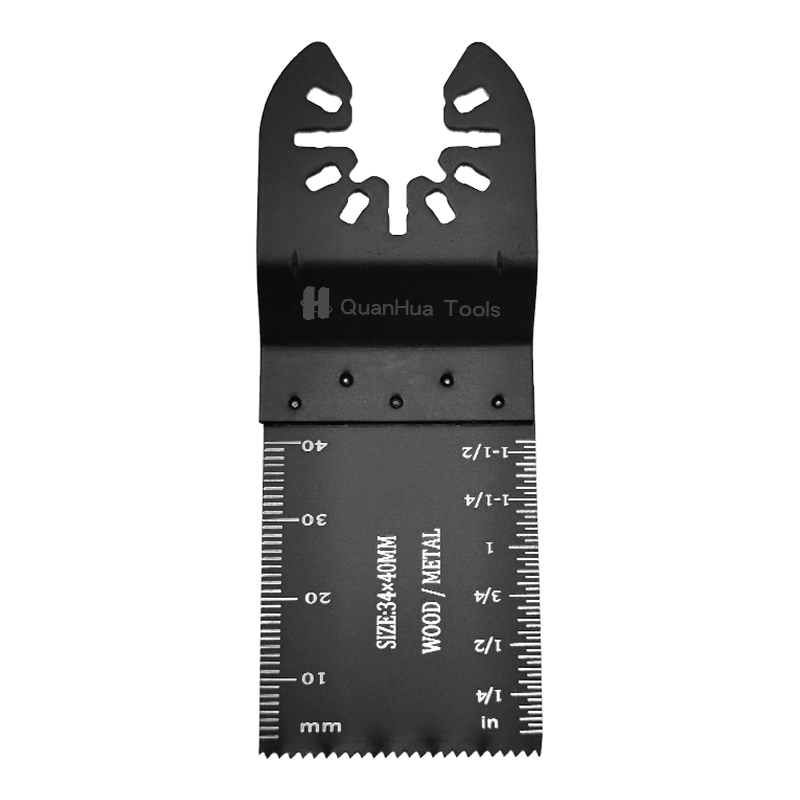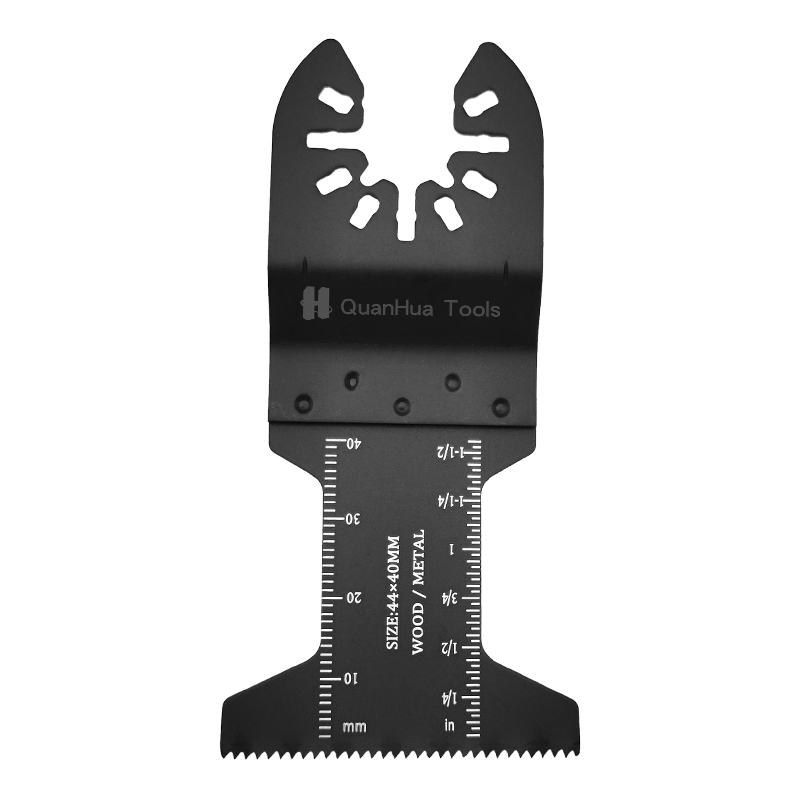1. The basic principle of bimetallic saw blades
The core feature of bimetallic saw blades is their "multi-material" structure. It is usually made of two different metal materials: one is high-strength steel, which is the base part of the saw blade, and the other is a high-hardness alloy material, usually high-speed steel (HSS) or tungsten steel, which is used to make the saw teeth. This structural design allows the bimetallic saw blade to have both strength and toughness during the cutting process, ensuring long-term efficient work.
Base part: The base is usually made of high-toughness steel or alloy steel. It provides strength for the entire saw blade, can withstand the huge pressure and impact force generated during the cutting process, and ensures that the saw blade is not easy to deform. The toughness of the steel base allows the saw blade to absorb vibrations during operation and reduce the risk of breakage.
Tooth part: The tooth part uses a higher hardness material, such as high-speed steel (HSS). High-speed steel is a high-temperature and wear-resistant material that can maintain its sharpness during the cutting process. It is especially suitable for cutting hard materials (such as stainless steel, aluminum alloy, etc.). It can maintain cutting performance for a long time, reducing the need for frequent replacement of saw blades.
The benefit of this design is that the base part provides good toughness and support, while the tooth part ensures high efficiency and sharpness during cutting.
2. Structure of bimetallic saw blade
The bimetallic saw blade consists of three parts, each of which plays a vital role in the performance of the entire saw blade:
Saw tooth part: Made of carbide or high-speed steel material, the hardness is usually above HRC 60. The design of this part determines the cutting efficiency and wear resistance of the saw blade. High-speed steel has very strong heat resistance and can withstand high temperatures without annealing, ensuring that it remains sharp during high-speed cutting.
Base part: The material of the base part is usually low-carbon steel or alloy steel. Its main function is to provide support and strength. Compared with the hard tooth part, the base part pays more attention to impact resistance and bending resistance. It can prevent the saw blade from deforming or breaking during use.
Welding bonding: The two metals are combined together by high-temperature welding, laser welding or electron beam welding. The welding point needs to be very strong to ensure that the saw blade is not prone to material separation under high-intensity work. The precision of welding directly affects the performance and service life of the saw blade.
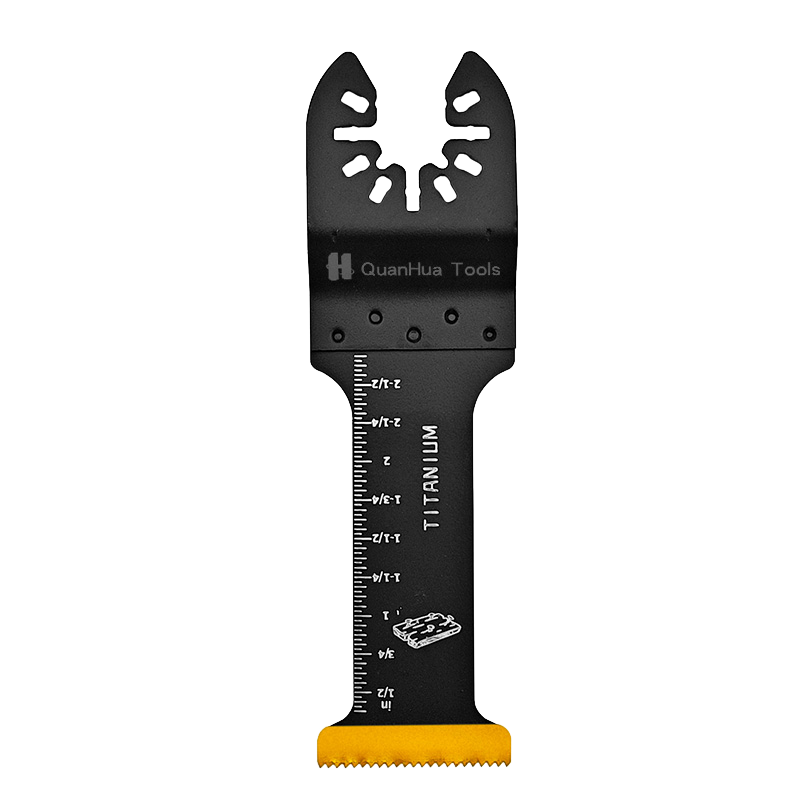
3. Advantages of bimetallic saw blades
Due to their unique design and manufacturing process, bimetallic saw blades have many advantages in performance:
Strong durability: The wear resistance and impact resistance of bimetallic saw blades far exceed those of traditional single metal saw blades. The saw teeth of hard materials can effectively resist high temperature, high pressure and friction during the cutting process, thereby greatly extending the service life.
Efficient cutting: The high hardness of the high-speed steel or tungsten steel tooth part enables the saw blade to quickly enter and complete the cutting when cutting metal. Compared with traditional single metal saw blades, bimetallic saw blades can provide higher cutting speed and efficiency, reducing cutting time.
Reduce wear: Due to the dual characteristics of the material, bimetallic saw blades wear more slowly and can continue to work at high intensity. When using bimetallic saw blades, they usually do not need to be replaced frequently, saving time and cost.
High cost performance: Although the cost of bimetallic saw blades is higher, due to their longer service life and less frequent replacement, they are very cost-effective in the long run.
4. Practical application of bimetallic saw blades
Due to their high efficiency and durability, bimetallic saw blades are widely used in many industries and fields:
Metal processing: Bimetallic saw blades are widely used in the metal processing industry. It can efficiently cut a variety of metals such as steel, stainless steel, aluminum alloy, copper, etc., especially when cutting hard metal materials, showing its unique advantages.
Construction industry: In construction, especially in steel bar cutting and metal structural parts processing, bimetallic saw blades can provide efficient and precise cutting. Many construction projects cannot do without bimetallic saw blades, especially when dealing with prefabricated concrete parts.
Mechanical manufacturing: In the process of mechanical parts processing, bimetallic saw blades have become an indispensable tool in processing due to their high cutting efficiency and durability. Whether it is gears, bearings, or various parts, bimetallic saw blades can provide high-quality cutting results.
Automotive industry: Bimetallic saw blades are also widely used in automobile manufacturing and maintenance. Cutting engine parts, frames, brake systems, etc., bimetallic saw blades can effectively deal with various hard materials and ensure production efficiency.
5. How to choose the right bimetal saw blade
Choosing the right bimetal saw blade is the key to improving production efficiency. Here are a few factors to consider when choosing:
Type of cutting material: Different metal materials have different hardness and properties. For example, stainless steel has a higher hardness, so when choosing a saw blade, you should consider using high-speed steel or tungsten steel saw teeth. For soft metals such as aluminum alloys, you can choose a saw blade with a coarser tooth shape.
Tooth shape and number of teeth of the saw blade: The design of the tooth shape directly affects the cutting performance. Common tooth shapes include straight teeth, wave teeth, and saw teeth, which are suitable for different types of materials and cutting requirements. The number of teeth is also related to the fineness of the cutting. Fewer teeth are suitable for cutting thicker materials, while more teeth are suitable for fine cutting.
Cutting speed and load requirements: Choose the right saw blade according to your cutting speed and required load. Some bimetal saw blade designs can withstand higher loads and are suitable for high-speed cutting, while others are more suitable for low-speed and long-term operations.
6. How to maintain bimetal saw blades
Although bimetal saw blades are more durable than traditional saw blades, proper maintenance and care can further extend their service life:
Regular cleaning: During the cutting process, metal chips and debris will accumulate on the surface of the saw blade. Timely cleaning of cutting residues on the saw blade can avoid them from wearing the saw blade and maintain good cutting results.
Appropriate cutting speed: Too high a cutting speed will cause excessive wear, while too low a cutting speed will reduce cutting efficiency. Adjust the cutting speed according to the instructions for use of the saw blade to maintain a stable working state.
Regularly check the teeth: Check whether the teeth are worn, blunted or defective, and replace or trim them in time to maintain cutting efficiency. If the teeth wear too quickly, check whether there are problems in the cutting process, such as unsuitable cutting materials or excessive pressure.

